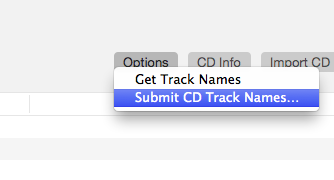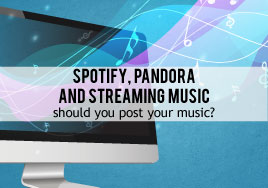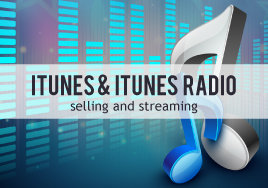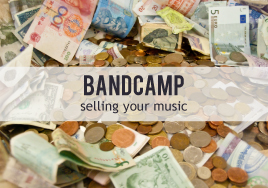YouTube – How To Make It Work For You
By Estimated reading time: 6 minutesThree Steps To Improve Performance
This feels like old news, but it’s possible you haven’t heard. If you’re not leveraging YouTube to your advantage, you have a gap in your approach to music sales. Maybe you don’t want to make a living from your music or you love your day job. That’s fine. You can probably stop reading this now. Or maybe you already have hundreds of thousands of subscribers. Millions, even. You too may stop reading this. If neither of these exceptions apply to you, then settle in. Let’s talk The YouTube. *wink*
You live in a wondrous time! Just look at the Internet. It’s an amazing resource to the independent artist and band. The thing is you’re busy – out there pounding the pavement, rocking various houses night after night. But, ask any wildly successful artist. To make that dollar, you’re going to have to spend time, both on and off the stage to develop your fan base. (Unless you’re posting your performances. Then bully to you!) And in this day in which we live it’s now easier than ever to reach untapped fans via YouTube.
But first, the bad news: You won’t make any livable wage monetizing YouTube videos until you start raking in views in the hundreds of millions. Some sources report that YouTube pays $.0003 per play. This means that in order for you to pull in minimum wage you would have to have views in the tens of millions, depending on your state’s minimum wage. So that’s the bummer. But, the good news is that you don’t have to rely solely on monetization to make YouTube work for you. There are lots of examples of bands and artists (and puppeteers and style gurus and… you get the idea) who have used streaming video to get their names out there and launch their careers onto other more lucrative platforms. Remember, if you’re trying to make a living from you music, you’re not just a musician. You’re in music business. Time to get savvy. Here are a few ways to yield desirable results from YouTube.
Invite your viewers to take it to the next level and subscribe.
Make no mistake. Gathering subscribers is important. Create your channel, make delightful viewing material and call your viewers to action by encouraging them to subscribe. (Just don’t expect to make noticeable amounts of money directly from YouTube doing this.) You have to say the words too. Here’s why: In most cases, people hear about a great video. They go watch the video. They move on with their day. The end. Don’t let this be your viewers. At the end of your video, thank them for watching and then say, “subscribe!” It’s that simple. You could add a please for good measure. Or confetti. Do you, but say the words.
Invite them to your website so they can buy your stuff.
Every subscriber you procure is now your fan. They have taken time to subscribe and this means they like you. Congratulations! Now it’s time to tell them how they can listen to your awesome music wherever they go, by driving them to your website or digital storefront to buy tracks they can’t get on YouTube. You may want to incentify people to subscribe by giving them a coupon code to save a dollar off your album (which is sold only on your website or Amazon, right?). Or maybe YouTube subscribers get access to extra video content or mp3 tracks that your average schmo can’t get. Hock your interesting and hilarious t-shirts and bumper stickers by sending these captive fans to your shop. Your subscribers will not necessarily arrive at the brilliant decision to visit your website. You must invite them to do so.
Make lots of interesting content. Lots!
Here’s the deal. There are many reasons to have a prolific amount of content. One of the reasons is this: the more you’re out there, the more you increase your chances of getting subscribers. You’ll reach people you wouldn’t normally have access to through other outlets – especially younger music fans. YouTube is the most listened to music platform. The most! Gathering more fans from the juggernaut of all music conduits can help you completely bypass a music label – like so many other successful musicians have – and allow you to do music on your own terms. Or maybe you want a music contract. Perfect! Having a huge number of subscribers can only help your cause. Having a large subscriber following also means drawing the attention of potential sponsors. YouTubers who have been successful at accumulating lots of subscribers have definitely grabbed the attention of sponsors. These sponsors can pay thousands of dollars for one video that includes a mention or placement of their product. This is not a farfetched pipe-dream, either. Sponsors are well within reach. It’s hard work, of course. Nothing worth doing will ever come easy. (Sorry.) But, the rewards include garnering a larger fan base and getting to make a living from your music and videos.
So now that you know why tons of content is a must, let’s talk about what you should post. Your video subject matter should be as diverse as you and you’re music, but you don’t have to over think everything you post. Sometimes these videos are just something fun – a day-in-the-life bit or a tutorial of some kind. I can hear some of your eyes rolling right now as you read this. This may feel beneath you or pandering, even. But, try to keep an open mind about this. It’s not selling out. You’re not giving into the man. You’re dominating various digital avenues so that they work for you. Think groceries and rent – and beyond! You’re not giving in. You’re making the Internet your bitch. So get creative. By all means, post your music and your shows and your time in the studio. But, also keep in mind that people will be endeared to you by getting to see behind the proverbial curtain a bit. Talk to your fans and let them see your fun side. Cover your favorite popular songs. Reveal to them your stupid human trick. Do skits. Get viewers to vote on which guitar strap or pair of skinny jeans you’ll wear at your next performance. Video your band’s trust exercises or day of water skiing. Whatever. You’re imaginative. Just give the fans what they want and make lots and lots of content.
There’s another perk of posting tons of videos. If you haven’t created a YouTube channel or your haven’t been posting very much, creating a lot of content will also help fast track the process of gathering subscribers and getting noticed by sponsors. And bonus, the more momentum you pick up, the more monetizing your content will pay. Again, not lucrative amounts, but it’s better than nothing.
It’s time – your time. Start using YouTube like the music business tool it is.
2 Comments
...Keep Reading





























